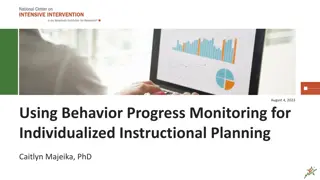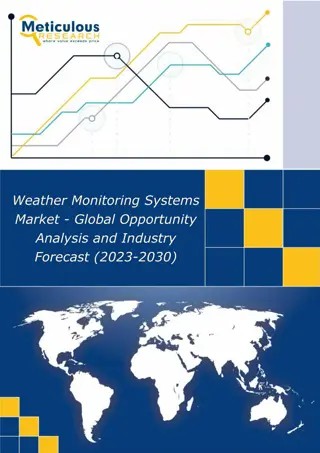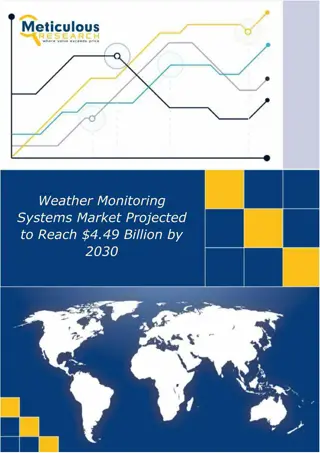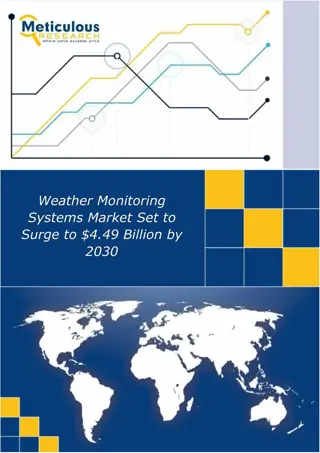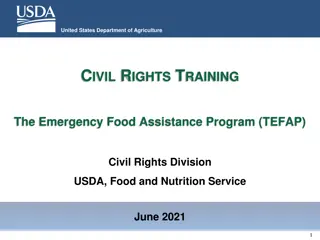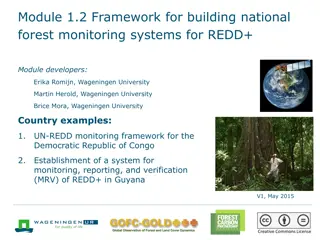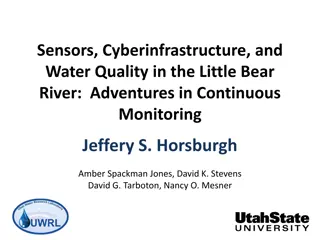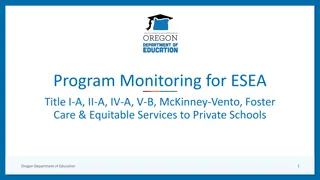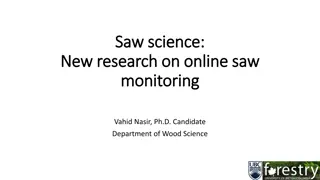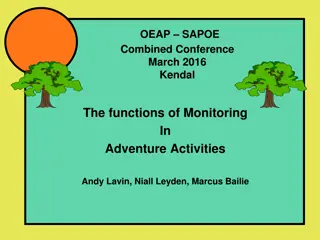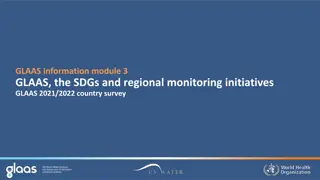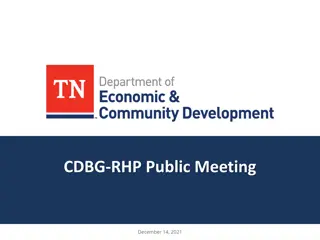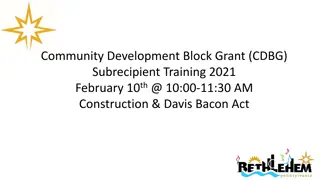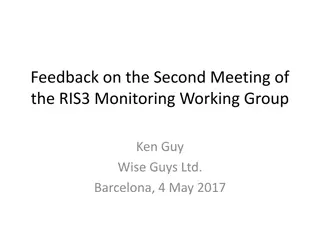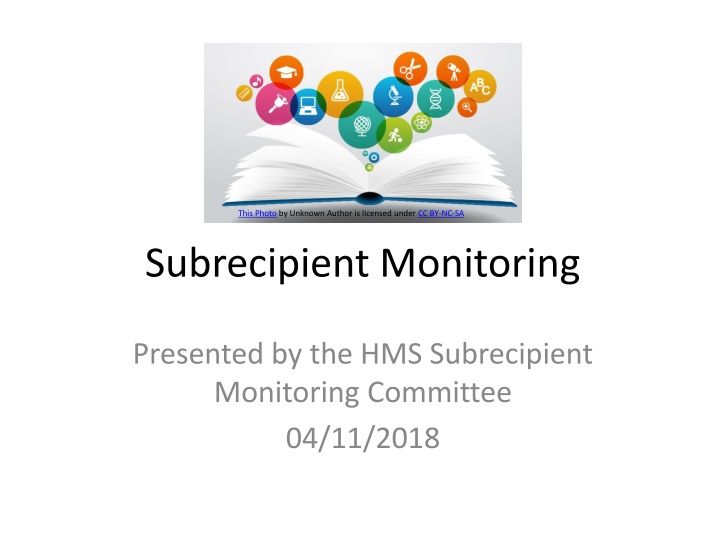
Subrecipient Monitoring Committee at HMS | Importance and Procedures
Explore the role of the Subrecipient Monitoring Committee at HMS, including membership details, subaward statistics, reasons for subrecipient monitoring, and the risk assessment database transition to GMAS. Learn about the significance of monitoring subrecipients and ensuring compliance with federal regulations and sponsor requirements.
Download Presentation

Please find below an Image/Link to download the presentation.
The content on the website is provided AS IS for your information and personal use only. It may not be sold, licensed, or shared on other websites without obtaining consent from the author. If you encounter any issues during the download, it is possible that the publisher has removed the file from their server.
You are allowed to download the files provided on this website for personal or commercial use, subject to the condition that they are used lawfully. All files are the property of their respective owners.
The content on the website is provided AS IS for your information and personal use only. It may not be sold, licensed, or shared on other websites without obtaining consent from the author.
E N D
Presentation Transcript
This Photo by Unknown Author is licensed under CC BY-NC-SA Subrecipient Monitoring Presented by the HMS Subrecipient Monitoring Committee 04/11/2018
Membership/Structure Founded in April 2014 Current Members: Chair: Melissa Maher, Manager, Subawards, HMS Office of Research Administration (ORA) ORA: Susan Cohn-Child, Sivan Ehrlich ORA Research Finance: Rita Bergemann, Mark O Brien Academic & Research Integrity: Suzanne Higgins, Samantha Speyer Department: Monica Ruse, Steven Dawson, Sunny Alvear, John Serpico, Victoria Nguyen https://hlcra.harvard.edu/hms-subrecipient-monitoring-committee
Subaward Statistics Harvard Schools with subagreements: How does HMS compare? As of January 2018:
Why Subrecipient Monitoring? Uniform Guidance: Requires prime recipients of federal funds ( pass-through entities ) to: evaluate each subrecipient's risk of noncompliance in order to determine the appropriate monitoring level; monitor the activities of subrecipients to ensure compliance with applicable Federal statutes and regulations and terms of the subaward; and verify that subrecipients are audited as required by Subpart F of the UG Non-federal subs: Monitoring of subs is still required by Harvard s Subrecipient Monitoring policy, may be required by sponsor ensure good stewardship of sponsored funding
Risk Assessment Database: GMAS Transition Each subrecipient organization is assessed annually - or every 3 years for Single Audit entities - by OSP and assigned a risk level of Green (low-risk), Yellow (medium-risk or insufficient data), or Red (high-risk) The GMAS Organization page will now contain the risk assessment information that was available in the database, except for quarterly comments Same permissions will apply Assessors (OSP + HEAT Harvard extended assessment team) will have access to edit, while other GMAS users will have view access Can also see current awards with a subrecipient institution across Harvard from the Organization page; ability to drill down into records dependent on your permissions
Subs Process Emails to Dept. ORA s process for drafting a new subaward or amendment includes sending an email to department to review for accuracy (correct dates, dollars, etc.) We recently updated the email template we use (regular email and DocuSign) when sending drafts to departments for review, to clarify roles and responsibilities
ORA Outgoing Subs Process OSP and ORA are responsible for risk assessments and checking a subrecipient s risk level when issuing and award Departments can check risk assessments and comments in GMAS but are NOT required to do so HLCRA Business Process Page for HMS (Outgoing Subawards Process): https://hlcra.harvard.edu/hms- ra-business-processes Process is for ORA s internal use, but shared to give others insight and information
Updates to HLCRA Harvard s Subrecipient Monitoring Policy and Toolkit, and other university-wide and HMS resources can also be found on HLCRA (https://hlcra.harvard.edu/) The HMS and SPH Subrecipient Monitoring Committees recently collaborated to update subaward-related content on HLCRA: Subaward resources can now be found under Resources > Award Lifecycle > Proposal Development > Preparing a Proposal > Inclusion of Subawards. Previous Subaward FAQs section has been deleted; this information is covered in other topic-specific pages. Information relating to subrecipient monitoring can still be found under Resources > Award Lifecycle > Award Management. New tabs have been added which provide links to University-wide subrecipient monitoring policies and resources.
Policy and Toolkit Harvard s Subrecipient Monitoring Policy and Toolkit are published on the OSP website and are also available on HLCRA. (https://hlcra.harvard.edu/) Minor changes made recently to reflect transition of risk assessment database information into GMAS Toolkit has been recently updated to include: Changes to the Database User s guide Advance Payment Guidance Minor language changes throughout the Toolkit
OBI Quarterly Reports Departments will remain responsible for completing quarterly spreadsheets No change to process, but enhancements to OBI in process
Contact Us Questions, Concerns, Suggestions? Contact the HMS SMC at: HMS_Submonitoring@hms.harvard.edu Thank you! This Photo by Unknown Author is licensed under CC BY-SA

